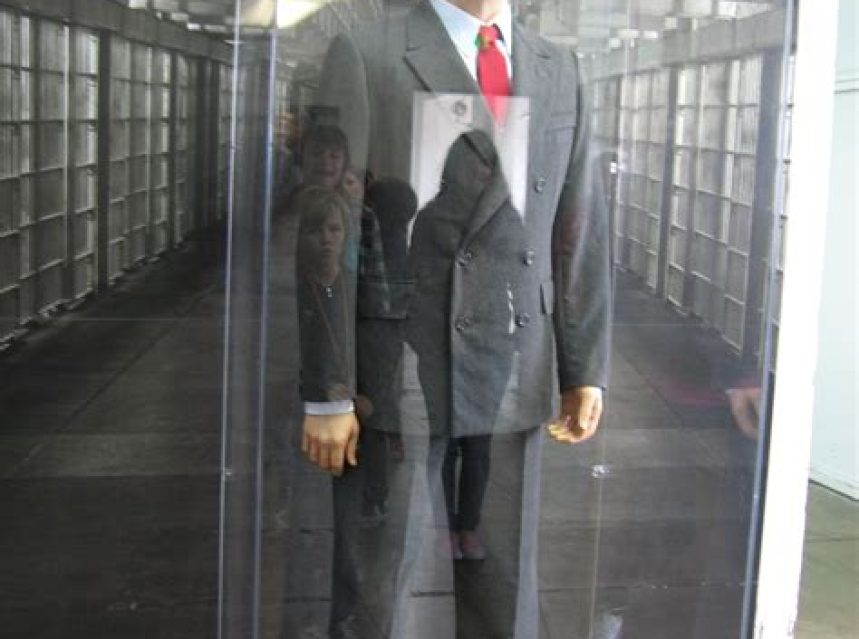Alcatraz Prison Uniform

Alcatraz Prison, widely known as “The Rock,” is an iconic institution that has left an indelible mark on the history of American prisons. As we delve into the captivating history of Alcatraz, it is impossible to ignore the significant role that uniforms played within its walls. Designed with meticulous precision, the purpose of these unique prison uniforms went far beyond mere identification. Join us as we explore the history, design, colors, and patterns of Alcatraz prison uniforms, and delve into their often underestimated effects on inmates. Finally, we will examine the legacy and enduring influence that these uniforms have had, not only on the prison system itself but also on society as a whole.
History of Alcatraz Prison
The history of Alcatraz Prison is fascinating and filled with intriguing stories. Located on a small island in San Francisco Bay, Alcatraz was initially used as a military fort before being transformed into a federal penitentiary in 1934. Its remote location and harsh conditions made it an ideal prison for housing the most dangerous and notorious criminals of the time.
Alcatraz operated as a prison for almost three decades, from 1934 to 1963. During this time, it gained a reputation as one of the most secure and escape-proof prisons in the United States. Despite numerous escape attempts, only a handful of prisoners are believed to have successfully escaped Alcatraz, and their fates remain a mystery to this day.
The prison’s brutal regime and strict discipline made it a place of fear and intimidation for inmates. Solitary confinement was a common punishment, and the prison’s harsh conditions took a toll on the mental and physical well-being of the prisoners. The prison’s reputation for being virtually escape-proof added to its notoriety, making it a symbol of the ultimate punishment for criminals.
Today, Alcatraz Prison has been transformed into a popular tourist attraction and serves as a reminder of the dark and fascinating history of the American penal system. Visitors can explore the prison’s cells, visit the famous “D Block,” where the most dangerous inmates were held, and learn about the lives of the prisoners who were once incarcerated there.
Design and Purpose of Alcatraz Prison Uniforms
The design and purpose of Alcatraz prison uniforms played a significant role in the functioning and control of the infamous penitentiary. The uniforms worn by inmates in Alcatraz were not just mere clothing but a strategic tool employed by the prison administration to maintain discipline and order within the institution.
Firstly, let’s discuss the design of the Alcatraz prison uniforms. The uniforms consisted of a distinctive gray and white striped shirt and pants. The horizontal stripes were not chosen randomly; they served a specific purpose. These stripes made it easier for the guards to identify any attempt by inmates to escape or hide within the prison grounds. The design effectively prevented the blending in of the inmates with their surroundings, minimizing the chances of evasion.
The purpose of the Alcatraz prison uniforms went beyond mere identification. They were designed to strip the inmates of their individuality and instill a sense of conformity. By making everyone wear the same uniform, the prison sought to eliminate any form of personal expression or individuality among the inmates. This sense of uniformity was essential in breaking down the inmates’ spirit and reinforcing the notion that they were part of a larger collective, devoid of personal identity.
Colors and Patterns of Alcatraz Prison Uniforms
Alcatraz Prison, located on an island in the San Francisco Bay, is one of the most notorious prisons in American history. Known for its strict rules and harsh conditions, Alcatraz was home to some of the most dangerous criminals of its time. In addition to its strict regulations, one notable aspect of Alcatraz was its distinctive prison uniforms. These uniforms were not only designed to distinguish the inmates from the outside world, but they also served a specific purpose in maintaining order within the prison walls.
When it comes to the colors and patterns of Alcatraz prison uniforms, there was a clear symbolism behind their design. The uniforms were predominantly gray, which represented the grim nature of prison life. The use of this color aimed to strip the inmates of their individuality and remind them of their incarcerated status. Additionally, the uniforms were often adorned with vertical black and white stripes. This pattern not only made it easier to identify inmates at a glance, but it also had a psychological effect on the prisoners.
The use of stripes in the Alcatraz prison uniforms was intentional and had a specific purpose. The vertical stripes were believed to have a disorienting effect on the inmates, making it harder for them to gauge distance and movement. This subtle psychological tactic was used to deter any potential escape attempts, as it created a sense of uncertainty and confusion. Furthermore, the stripes also made it easier for the prison guards to identify any inmates who may have attempted to blend in with the rest of the population.
- Gray color: Represents the grim nature of prison life
- Vertical stripes: Serve as a psychological deterrent and aid in inmate identification
| Color | Pattern | Purpose |
|---|---|---|
| Gray | Vertical black and white stripes | Strip inmates of individuality and aid in identification |
In conclusion, the colors and patterns of Alcatraz prison uniforms were not simply chosen at random. They were designed with a purpose in mind, serving as a visual reminder of the harsh reality of prison life. The gray color and vertical stripes worked together to strip the inmates of their individuality, while also making it easier for prison guards to identify any potential security threats. While Alcatraz may no longer be in operation, its legacy and the impact of its prison uniforms continue to be studied and remembered.
Effects of Alcatraz Prison Uniforms on Inmates
Alcatraz Prison, located on a desolate island in the San Francisco Bay, is notorious for housing some of America’s most dangerous criminals. One aspect of the prison that often goes overlooked is the effect that the inmate uniforms had on the prisoners’ psychological well-being. The design, colors, and patterns of these uniforms played a significant role in shaping the daily lives and experiences of the inmates.
The purpose behind the distinctive uniforms at Alcatraz was to dehumanize the prisoners and strip them of their individuality. The stark, plain gray color was chosen intentionally to create a sense of uniformity and conformity among the inmates. By removing any personal expression and clothing choices, the prison effectively reduced the prisoners to mere numbers within the system.
Furthermore, the striped patterns on the Alcatraz uniforms were another means of exerting control and dominating the inmates. These high-contrast black and white stripes were not only visually striking but also associated with connotations of being labeled, like a barcode or a zebra. The intention was to make the prisoners easily recognizable and to remind them of their status as criminals.
- The monotonous gray color and striped patterns of the Alcatraz prison uniforms had a profound impact on the inmates’ mental state. This uniformity created a sense of depersonalization and loss of identity, making it difficult for the prisoners to maintain their individuality.
- The psychological effect of the uniforms extended beyond just the inmates’ self-perception. They also influenced the dynamics within the prison community. The lack of individuality fostered a sense of camaraderie among the inmates, as they were all in the same dehumanizing boat.
- On the other hand, the uniformity and clear identification of prisoners through their uniforms also made it easier for the prison authorities to maintain control and prevent escape attempts. The distinctiveness of the Alcatraz uniforms acted as a deterrent, discouraging inmates from attempting to blend in with the outside world.
| Effects of Alcatraz Prison Uniforms on Inmates |
|---|
| Dehumanization |
| Loss of identity |
| Camaraderie |
| Control and deterrence |
In conclusion, the effects of Alcatraz prison uniforms on the inmates cannot be underestimated. The deliberate design, color, and pattern choices were intended to diminish their sense of self and reinforce their status as prisoners. While the uniforms succeeded in suppressing individuality and fostering a sense of conformity, they also inadvertently created a shared experience among the inmates. The lasting legacy of Alcatraz prison uniforms serves as a reminder of the power that clothing can have on shaping human behavior and perception.
Legacy and Influence of Alcatraz Prison Uniforms
The legacy and influence of Alcatraz prison uniforms cannot be underestimated. These uniforms have left an indelible mark on the history of criminal justice and have played a significant role in shaping the public’s perception of incarceration. From their design and purpose to the colors and patterns used, Alcatraz prison uniforms have not only served their practical function but have also had a profound impact on the prisoners who wore them and the society that observed them. Let us delve deeper into the legacy and influence of these iconic uniforms.
One of the key aspects of the legacy of Alcatraz prison uniforms lies in their design and purpose. These uniforms were specifically designed to demean and dehumanize the prisoners, strip them of their individuality, and maintain a strict sense of control within the prison walls. The infamous striped patterns and drab colors used in the uniforms were deliberately chosen to further emphasize the prisoners’ loss of identity and their status as outcasts.
The influence of Alcatraz prison uniforms extends beyond the physical confines of the prison. The image of prisoners donning these striped uniforms has become deeply ingrained in popular culture and is often used as a symbol of criminality. Movies, TV shows, and books frequently depict inmates wearing similar striped uniforms, perpetuating the association between these garments and criminal behavior in the public’s consciousness.
- Alcatraz prison uniforms have also had a lasting impact on the psychology of inmates. The uniform becomes a constant reminder of their incarceration, subjugation, and loss of personal identity. The drab colors and monotonous patterns can contribute to a sense of hopelessness and dehumanization, affecting the mental well-being of the prisoners.
- Furthermore, the legacy of Alcatraz prison uniforms extends to the field of penology. The design and purpose of these uniforms have influenced the development of modern correctional attire. While many prisons and correctional facilities have moved away from the stark striped patterns, the underlying concept of using uniforms to establish and maintain control within the prison system remains prevalent.
| Effects of Alcatraz Prison Uniforms on Inmates | Legacy and Influence of Alcatraz Prison Uniforms |
|---|---|
| The striped uniforms can contribute to a sense of hopelessness and dehumanization. | The image of prisoners donning striped uniforms perpetuates the association between these garments and criminal behavior. |
| The loss of personal identity is emphasized through the uniform. | The influence of Alcatraz prison uniforms extends to the development of modern correctional attire. |
In conclusion, the legacy and influence of Alcatraz prison uniforms are far-reaching. These uniforms have not only influenced the field of penology but have also left an imprint on popular culture. The design and purpose of these uniforms have highlighted the power dynamics within the prison system and the impact they can have on the mental well-being of inmates. Despite the closure of Alcatraz prison, the influence of its uniforms continues to resonate and serves as a reminder of the complex relationship between incarceration, control, and identity.
Frequently Asked Questions
Q1: How did the design and purpose of Alcatraz Prison uniforms contribute to the overall prison system?
A1: The design and purpose of Alcatraz Prison uniforms played a significant role in maintaining control and discipline within the prison system. The uniforms were designed to dehumanize inmates and strip them of their individuality, reinforcing the prison’s strict hierarchical structure. By enforcing a standardized dress code, it became easier for prison staff to identify and monitor inmates, reducing the chances of escape or unrest.
Q2: What were the colors and patterns used in Alcatraz Prison uniforms?
A2: Alcatraz Prison uniforms consisted of basic colors and patterns that were meant to convey a sense of uniformity and manageability. Inmates wore distinctive gray or khaki-colored jumpsuits, often adorned with a bold black number on the front and back. This numbering system served to further depersonalize the inmates and ensure easy identification.
Q3: How did the Alcatraz Prison uniforms affect the inmates?
A3: The Alcatraz Prison uniforms had a profound psychological impact on the inmates. By removing their personal clothing and forcing them to wear identical uniforms, the prison aimed to strip away their individuality and make them feel like mere numbers in the system. This dehumanization, along with the constant reminder of their status as prisoners, served to break their spirit and reinforce their sense of incarceration.
Q4: What was the legacy and influence of Alcatraz Prison uniforms?
A4: The legacy of Alcatraz Prison uniforms lies in their symbolic representation of the rigid and austere nature of the prison itself. The distinctive design and purpose of these uniforms have been immortalized in popular culture, reflecting their lasting impact on the public’s perception of the penitentiary system. Additionally, the concept of standardized prison uniforms continues to influence correctional facilities worldwide, emphasizing the need for control and uniformity within such institutions.
Q5: Were there any variations in Alcatraz Prison uniforms throughout its history?
A5: While the core design and purpose of Alcatraz Prison uniforms remained consistent, there were slight variations over the years. In the early years of the prison, inmates wore striped uniforms similar to those of other correctional facilities. However, these were later replaced by the iconic gray or khaki jumpsuits, giving the prison a more distinct visual identity. These changes were made to enhance the efficiency and security of the prison system, ensuring quick identification of inmates.
Q6: Did Alcatraz Prison uniforms contribute to the rehabilitation of inmates?
A6: Alcatraz Prison uniforms were not designed with rehabilitation in mind. Instead, their purpose was to maintain strict control and discipline within the institution. The uniforms, with their dehumanizing effects, aimed to deter and punish inmates, rather than aid in their rehabilitation. The focus of Alcatraz Prison was primarily on punishment and isolation, rather than on providing opportunities for personal growth or reform.
Q7: What happened to the Alcatraz Prison uniforms after the closure of the facility?
A7: After the closure of Alcatraz Prison in 1963, the uniforms were no longer used. Many were likely destroyed or discarded, while others may have found their way into private collections or museums. The iconic imagery of the Alcatraz Prison uniform, however, lives on in photographs, films, and popular culture, reminding us of the prison’s unique history and the impact it had on the lives of its inmates.



